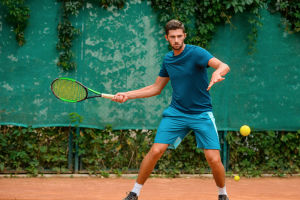Have you ever watched an ice hockey game and been amazed at how fast everything moves? From rapid skating to lightning-quick passes, ice hockey is known as one of the fastest team sports on the planet.
But speed alone doesn't win games. What truly makes ice hockey fascinating is the blend of speed and smart strategy. Let's dive into how these two elements work together to create this electrifying sport.
Blazing Speed on Ice
Skating at high speeds is the foundation of ice hockey's pace. Players can reach speeds of up to 30 miles per hour on their skates, which is much faster than most other team sports played on solid ground. The smooth, low-friction surface of the ice allows players to glide swiftly and change direction quickly. This speed creates constant action and keeps fans on the edge of their seats.
Fast-Paced Game Structure
The structure of an ice hockey game encourages nonstop movement. With three 20-minute periods and frequent player substitutions, players maintain high energy and intensity throughout. The puck moves rapidly across the rink, and teams switch between offense and defense in seconds. This relentless tempo demands that players be both physically fit and mentally alert.
Strategic Positioning and Playmaking
Speed without strategy would be chaos. Ice hockey teams use carefully planned tactics to outsmart opponents. Players position themselves strategically to create passing lanes and open shots. Coaches design plays that capitalize on player speed while exploiting opponent weaknesses. For example, quick line changes and coordinated attacks maximize momentum and scoring chances.
Communication: Key to Seamless Teamwork
On the ice, communication is vital. Players constantly call out to each other, signaling passes or alerting teammates to opponents' moves. This clear and fast communication allows the team to adjust their strategy instantly during fast transitions. Effective communication helps maintain team cohesion despite the rapid pace.
Skating Skills and Agility
Agility is just as crucial as raw speed. Players must maneuver around opponents, stop suddenly, and accelerate again—all while controlling the puck. Skating skills like tight turns, quick stops, and explosive starts enable players to keep pace and create opportunities. This blend of speed and control makes hockey uniquely challenging.
The Role of Goaltenders in Fast Play
While skaters focus on speed and offense, goaltenders combine sharp reflexes with strategic positioning to defend their net. They must anticipate fast shots and make split-second decisions. Their ability to stay calm and react quickly is a vital part of the game's balance between speed and strategy.
Training for Speed and Strategy
Players train rigorously both on and off the ice. Skating drills improve speed and balance, while video analysis helps players understand opponents' tendencies and refine tactics. Strength training enhances endurance, ensuring athletes can sustain high-speed play throughout the game.
Conclusion: The Perfect Balance of Speed and Mind
Ice hockey's unique appeal comes from the perfect harmony between rapid skating and thoughtful strategy. The sport demands not only physical speed but also sharp mental skills, making it exciting and unpredictable.
Next time you watch a hockey game, pay close attention to how players use their speed strategically to control the flow and outwit their rivals. Could you keep up with such a thrilling pace?


